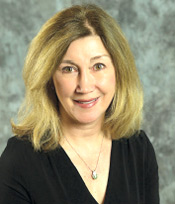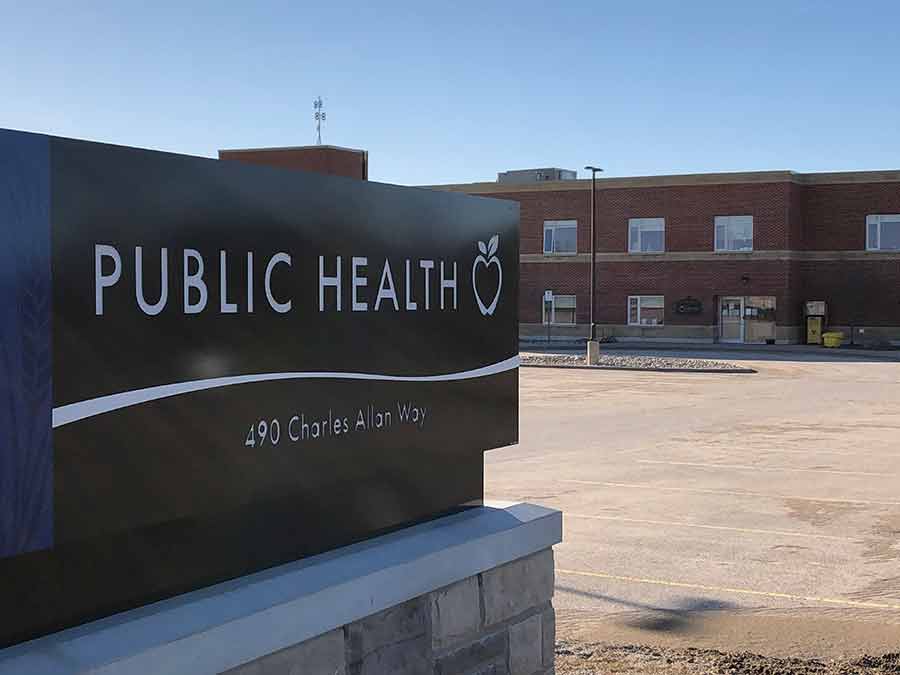GUELPH – The local public health unit is preparing to respond to possible future waves of COVID-19.
At the Sept. 9 Wellington-Dufferin-Guelph Public Health (WDGPH) board meeting, manager of health analytics Jennifer MacLeod presented a report explaining how a team of epidemiologists and data scientists has prepared alerts to announce that a second wave is approaching, before it actually happens.
“They’ve worked really hard with our partners … including public health partners, hospital partners and Ontario Health Team partners to identify indicators that would be really great alerts,” MacLeod said.
“So you’ll have noticed from our current dashboard on our website that we track cases, we look at trends of cases, and numbers of cases that are currently happening.
“What we wanted to do was to add to this and we wanted to look at indicators related to hospitalization, syndromic surveillance, preparedness and public health performances, and in addition to that, we wanted to select triggers that would indicate thresholds where public health action would be required.”
While a second wave isn’t guaranteed, the report states that historically pandemics appear in two or more waves.
Over the last week there have been increased cases of COVID-19 across the province, which is showing changes in the seven-day moving average of COVID rates.
MacLeod said it’s likely that there will soon be a difference in the seven-day average for the effective reproduction (RE) number.
“That’s one of the numbers that we’re really interested in watching,” she said.
“It’s the number of people and population who can be infected by an individual at any specific time.
“So if one infected person infects two other people then that’s an RE of two.”
MacLeod explained that this number will change as the population becomes immunized either through immunity or vaccination.
Other indicators of interest to public health are those around hospitalization.
“We’re not seeing any big changes there but we’re anticipating perhaps seeing some changes,” MacLeod said.
“So there are a group of them that look at hospitalization cases, per cent occupied acute care beds, and so on.”
Medical Officer of Health Dr. Nicola Mercer explained that while the first wave impacted seniors and those in congregate care settings, the recent increases in cases is largely among the young adult population (between 16 and 40).
That means there are likely fewer hospitalizations, but there could still be cases circulating in the community – especially since young adults often have large numbers of contacts.
“Some of the things that are a bit worrying is you could have a larger burden of disease simmering in the community, especially in the young adult population who may have milder symptoms or some of them may be asymptomatic,” Mercer said.
“And it’s only when we see it start to impact older adults … those over 50, or those with underlying medical issues, where you could potentially see a significant impact on the healthcare system as that age group, a higher percentage of them … could require hospitalized services.”

DR. NICOLA MERCER
Mercer explained the goal throughout the pandemic is to achieve a “slow burn” or a trickle of cases until there is a treatment or vaccine.
“Enough that the health care system can manage easily (those) who are sick and that public health and the health care system can deal with the cases in the community,” she said.
However, it’s when there is an ignition and sharp increase in cases that the health care system may not be able to cope.
WDGPH board chair George Bridge asked about the maximum number of cases public health could handle and still continue contact tracing.
“It’s paramount that you can get to those people as soon as possible to do that,” he said.
Director of community health and chief nursing officer Rita Isley explained that at current staffing levels, public health could manage about 50 cases a day.
However, she said there are other resources and supports that helped in the latter part of the first wave that could be used to help with contact tracing and case management follow-up.
“I think we have the capacity to do more if we see an increase and spend some time re-diverting some of our staff because we have done a really good job of training a large amount of staff to be able to do the case and contact tracing,” Isley said.
She also said that there is a plan to include additional people who have not had the appropriate training yet, under two scenarios:
- more than 50 or 60 cases in a day; or
- nurses are needed to provide the COVID-19 vaccine.
Mercer said it’s very important people in the community adhere to public health measures.
“What we really need to emphasize to the community is that the social gatherings on weekends, the birthday parties, the cheating when you have just your friends and just your family over for gatherings contributes to the burden of illness within the community,” Mercer said.
That, she added, “contributes to the risk locally that we’ll have to potentially close classes or schools … we may have to close certain types of businesses down or restrict gatherings and that restricts the broader community.”
Mercer added, “So it can’t be underestimated that we’re in this for the long haul and COVID fatigue is a real thing … we all need to encourage those in our social circles to continue to practice public health measures.”
Those measures include keeping social circles small, wearing masks indoors, especially when physical distancing is difficult, and practicing good hand hygiene.
“These are measures that are very, very simple,” Mercer said.
“People are cheating and going outside their bubbles and almost all of our young adult cases … when they are questioned tend to have had contact with other young adults in the community in the time frame prior to them developing symptoms.
“So that is what is most needed and that is what is most difficult.”



